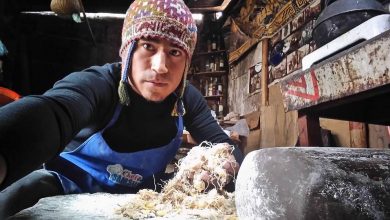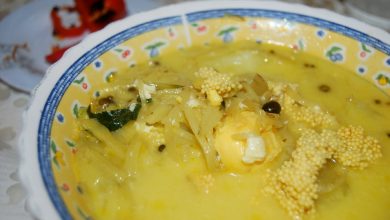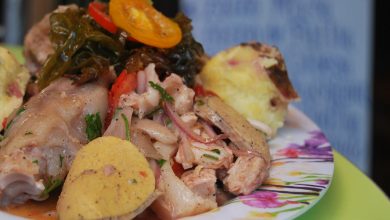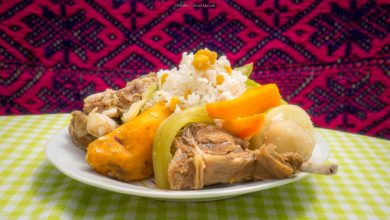Quinoa Marmalade, A Cuzco Treat

Quinoa has become popular around the world. Generally it is used to prepare savory dishes, but sometimes in Cuzco it makes its way into sweets as in this quinoa marmalade that has a story.
The people of Cuzco like jams and marmalades especially on their breads at breakfast–if they are eating creole-style coffee with bread — and at afternoon or evening tea, called “lonche” in Cuzco. While in Cuzco’s restaurants it is common to find strawberry jam, one of the products that Peru promotes internationally, occasionally one finds other preserves such as the indigenous elderberry, called “sauco” in Peru. But in Cuzco´s homes many other combinations of fruit are made.
One day, when the boys at one of Cuzco’s two large schools, the Colegio Garcilaso, were supposed to bring to class for show and tell some food they had cooked, Fernando decided to try making marmalade with quinoa. One classic marmalade involves cooking orange peel, sugar,and water. Well Fernando chose to cut way back on the orange peel and use quinoa to fill the sweet mixture.
His quinoa marmalade was a success at the school, surprising one and all with its texture of slightly crunchy quinoa and yet citrusy from the remaining orange peel. It was a success. And it may well be the most nourishing marmalade around, given quinoa’s high percentage of protein and vitamins.
Making the marmelade is easy. You just have to let the good flavors and aromas of the kitchen flow. The recipe is not precise but depends on, as they say, the taste and style of the cook.

To make quinoa marmalade one must first wash the quinoa well to remove any of the bitter substance, the saponin, that naturally protects the grains as well as any impurities that might have joined them. Then one should cook the quinoa, without salt until the water has gone, but the quinoa still remains as whole grains–it has not broken open. While cooking it is good to stir the quinoa with a fork occasionally to keep the grains separate.
(Translator’s note: proportions in this note are not given, in part because people in Cuzco know from experience how much water is required to produce a certain texture of quinoa. But I think it is about a cup and a half of water per one cup of raw quinoa.)
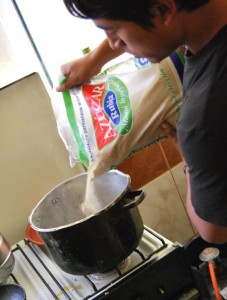
Once cooked, set the quinoa aside. You can even leave it over night so its texture firms up a bit.
Then add about half as much water in volume as you have quinoa. (If you have four cups of quinoa, you would put two cups of water in the pan.) Add to it a cinnamon stick and a whole clove or two (to your taste). as well as the peel of a washed orange (more or less as you wish). Add sugar, according to marmalade proportions and bring to a boil. Let it boil for some fifteen minutes.
(Translator’s note: The recipe is imprecise on the amount of sugar following again the sense of the cook, but it seems about two to one, i.e. two cups of sugar for one cup of water. Furthermore the boiling time is for the elevation of Cuzco where boiling temperatures are lower and it can take longer to obtain the same effect, so at lower altitudes the time will be less.)
Once the syrup has thickened to what in Spanish is called the “punto caramelo”, the caramel point, add the quinoa to the liquid. It should just cover the quinoa and make a thick mixture. One lets it thicken more over the flame until when a small amount is removed and placed on a cold plate it forms a jelly. At this point you add orange peel (either sliced or diced) as well as some orange juice, to give the mixture a citrus flavor, before letting the mixture cool.
Without doubt this is one of the more typical sweets of the City of Cuzco. It not only has an exquisite flavor, with its combination of spice, citrus, and the texture of quinoa, it is filled with nutrients.
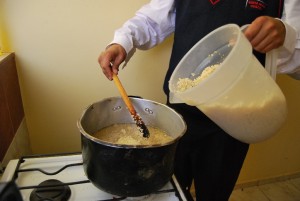
In Cuzco they say that it is good for people whose activities require strength and energy such as athletes. They also say it is good for children, pregnant women, people recovering from an injury, and the malnourished.
People claim it helps maintain proper levels of cholesterol in the blood. It has no gluten and it helps develop brain cells, thereby strengthening ones ability to learn. As a result quinoa is a favorite of university students.
Besides marmalade, quinoa is used in the preparation of soups, stews, cakes, breads, and other sweets. It is no surprise that quinoa is becoming increasingly popular all around the world, though it developed here in the Andes.

